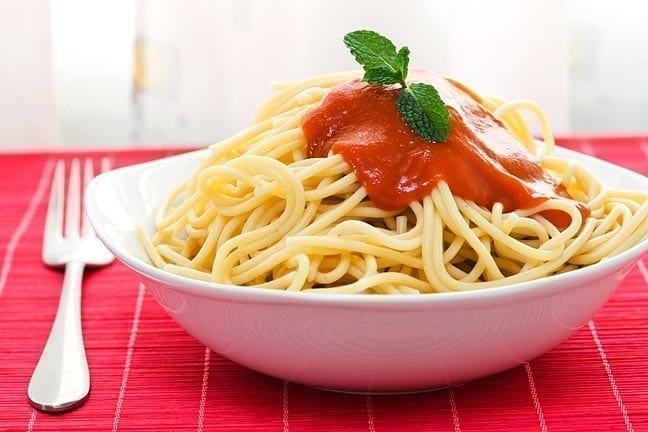If your New Year’s resolution includes dropping a few pounds, you might be delighted to learn that you can actually trick yourself into doing so.
Remember the Delboeuf illusion theory (think, optical illusion) from 5th grade science class? Way back then we learned that the size of a circle appears smaller when surrounded by a much larger one. Meanwhile, the size of that same circle appears bigger when surrounded by an only slightly larger one. Apparently, the same holds true with our dinnerware.
GALLERY: Outsmart Your Eating Instincts
In a new study published in the Journal of Consumer Research, researchers (Koert van Ittersum, Ph.D. from Georgia Institute of Technology and Brian Wansink, Ph.D. of Cornell University) asked 225 people to pour a specified amount of tomato soup into different sized bowls. Consistent with what we learned in science class, participants poured less into the smaller bowls and more into the larger ones.
Why? Because a serving size can look larger than it actually is depending on your choice of dinnerware. On smaller plates, we tend to serve ourselves less food, and thus, eat less. On bigger plates, however, we tend to serve more. In fact, participants dished out up to 31 percent more soup.
Given the fact that the average size of dinner plates has increased by almost 23 percent since 1900 and obesity rates have more than doubled in the last 30 years, the correlation makes sense, right?
But if you think you can get around this optical illusion by simply reminding yourself to take less food, the researchers say you can’t. Follow-up studies showed that the “bowl bias” is nearly impossible to eliminate, no matter how much education or awareness we have.
Does this mean we are destined to eat from salad plates for the rest of our lives? Well, that’s one way to reduce portion size. The other is to be conscious of the color of your food and your plate.
Interestingly enough, during the same study, researchers asked participants to serve white-sauce or red-sauce pasta on either a large white or a large red plate. Contrasting sauce-plate color combos reduced serving size by as much as 21 percent. Even just changing the color of the tablecloth, picking one that contrasts your dinner plate, can reduce the amount you serve by 10 percent.
The bottom line: Choose smaller plates and bowls and ones with a high-contrast to the food or table. And if you’re eating out, the same principles can apply. Ask for a smaller dish and use a white napkin under your black takeout container if necessary to create more contrast.
READ MORE: Outsmart Eating Out
Even if this only saves you 50 calories a day, that could add up to five pounds a year—something that just might help you stick with your New Year’s resolution. Bon appetit!




































